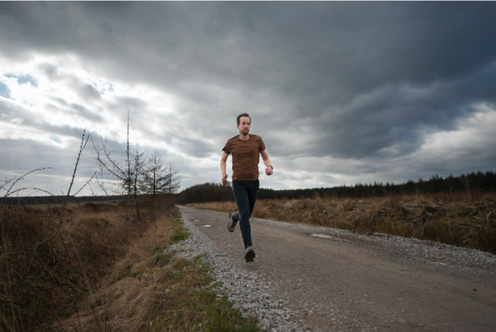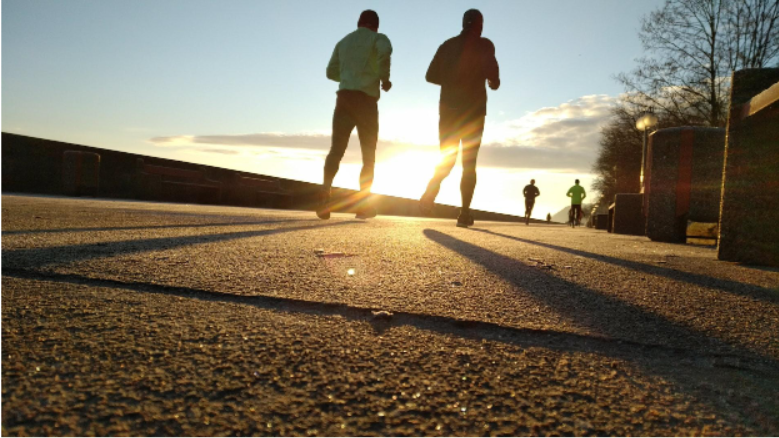
If you’re tired of your usual cardio, it’s time to spice things up a bit. Don’t worry, we’re not talking about taking it as far as signing up for a triathlon right away—though that would be something to aim for! We’re talking about trying new twists and changing your usual routine.
It might look weird, childish, and funny, but why not try reverse running instead of your usual run? We might sound like we’re kidding, but trust us, we’re not. In fact, you’ll get great benefits from reverse running, and that’s what we’ll talk about in a bit.
But first…
What Is Reverse Running?
Before we hop right into the physical benefits of reverse running, let’s first get to know what it is in the first place. Also known as backward running, retro running, or retro locomotion, reverse running is what you imagine it is. It is the opposite of conventional forward running. Simply put, the runner accelerates toward the direction his back is facing.
A lot of fitness enthusiasts consider trying out this running trend nowadays. But more than just a fleeting trend, reverse running has been around for years as a recommended therapy for people recovering from injuries, specifically, lower-body injuries.
Coaches also employ it as training for athletes to enhance their balance and coordination. Kids, on the other hand, don’t need to wait for adults to lecture them about the benefits of reverse running. Out of curiosity, it just comes naturally for them to try it in hopes of escaping the boredom.

Benefits of Running Backwards
Reverse running is not only fun and challenging, but the physical benefits are also backed by scientific studies.
Knee-Friendly
Our joints experience the normal wear and tear that comes with age. So, physical activities that involve a lot of running and even slow-paced jogging alone can put a lot of pressure on aging knees. If you’ve been physically active all your life, it’s hard to take the news that you need to slow down a bit when it comes to running-intensive activities.
But did you know that jogging backward is knee-friendly? A study suggested that this running style puts relatively less strain on the knees as compared to forward running. Therefore, reverse jogging is a good option for those who love to jog but are already in their mid-50s or older. It’s also suitable for those who are recovering from lower body injuries. Additionally, adding macronutrients, such as protein, to your diet can further help support joint health. Several studies have shown that consuming whey protein powder can help increase muscle mass and strength, which in turn supports joint stability and mobility.
Fun Way to Burn Excess Body Fat
Forward or backward, your direction doesn’t matter. Either way, you’re completing your ideal number of steps per day. Engaging in that useful cardio activity burns calories. What’s more, you’re doing it in a fun way!
Engages Different Muscle Groups
Retro running particularly engages your glutes and hamstring muscles more than your quadricep and calf muscles. So, by tweaking your running style by just a few minutes per week, you’re able to strengthen different muscle groups in your lower body.
In addition to this, jogging backward promotes better posture. As you notice, when you run forward, you tend to lean a bit to the front. This causes your back to slouch, especially if you lack core strength. On the contrary, retro running straightens up the spine and the slight stretch feels incredibly good.
Enhances Running Skills and Essential Fitness Attributes
Whether you’re training for a triathlon or you simply want to build your physical endurance, incorporating backward running into your training strengthens your stamina and speed for long periods of jogging or running. It can also dramatically improve your balance and coordination as the activity trains your brain to command your body to perform something it doesn’t usually do.
Get Started With Reverse Running
How do you do reverse running anyway? We’ve got some practical tips to set you up for success.
Start Slow
Just like any activity, you cannot force yourself to go full-on with reverse running right away. In fact, the first time you try it may reveal that your body needs further conditioning. So, the best way to tackle this is to start gradually. Five minutes per week would be ideal. Then, gradually work your way up until you can do a full 45-minute backward run.
Also, to test things out, you’ll need to start with reverse walking before you move on to jogging or running backward. A great way to do this is by trying it on a treadmill first since you’ll feel and know that you’re safer there.
Hold on to the grip at first and use the lowest speed setting that will make you comfortable as you practice walking in reverse. Allow your body to naturally develop its muscle memory for this kind of activity. Track your progress per week to see where else you need to improve.

Keep Safety Tips in Mind
Choosing the proper location for retro running is crucial. Forest trails are of course a no-no. You don’t know when you’ll come across a fallen log or even a snake dangling from a branch of a tree! Obviously, busy thoroughfares won’t be a good option as well.
As a general rule, you need to find a track with less or no crowd to bump into and no obstacles that can cause you to fall over. If possible, bring an exercise companion to supervise your training and warn you of impending risks along the way. Your neck will also thank your exercise buddy later as you don’t need to check what’s behind you too often.
Try Jogging Backwards Now
When are you going to try jogging backward? You don’t need to wait for boredom to strike. Start incorporating it as part of your cardio exercises now. It’s gentler on your knees, great for trimming down those excess fats, enhances fitness attributes, and engages different muscle groups. Plus, it's super fun, especially when you do it with your friends. And speaking of friends, never mind if you don’t have a pair of eyes with 20/20 vision at the back of your head. Your supportive friends acting as your exercise buddies will surely make sure you won’t fall over or bump into something dangerous!

Write a comment